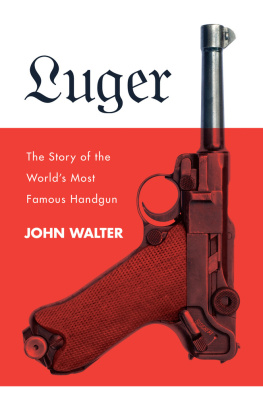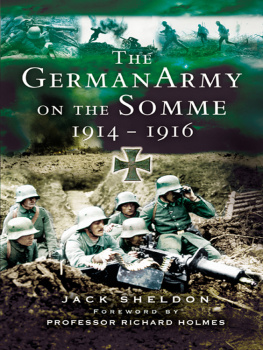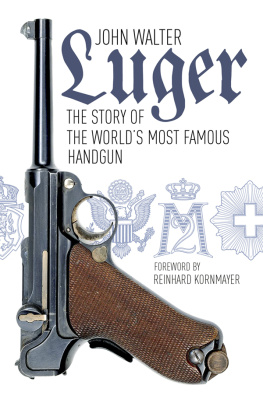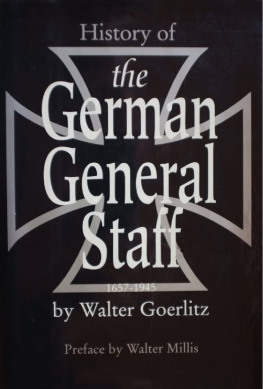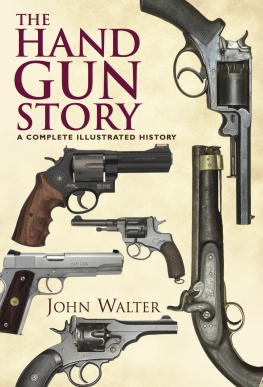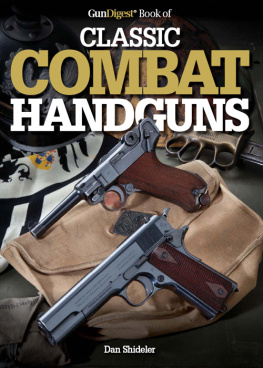


First Skyhorse Publishing edition 2018
Copyright 1995, 2001 by John Walter
All rights reserved. No part of this book may be reproduced in any manner without the express written consent of the publisher, except in the case of brief excerpts in critical reviews or articles. All inquiries should be addressed to Skyhorse Publishing, 307 West 36th Street, 11th Floor, New York, NY 10018.
Skyhorse Publishing books may be purchased in bulk at special discounts for sales promotion, corporate gifts, fund-raising, or educational purposes. Special editions can also be created to specifications. For details, contact the Special Sales Department, Skyhorse Publishing, 307 West 36th Street, 11th Floor, New York, NY 10018 or .
Skyhorse and Skyhorse Publishing are registered trademarks of Skyhorse Publishing, Inc., a Delaware corporation.
Visit our website at www.skyhorsepublishing.com.
10 9 8 7 6 5 4 3 2 1
Library of Congress Cataloging-in-Publication Data is available on file.
This edition was previously published in 2001 by Greenhill Books in the United Kingdom and Stackpole Books in the United States as The Luger Story.
Cover design by Rain Saukas
Cover photo credit: iStockphoto
Print ISBN: 978-1-5107-2728-1
Ebook ISBN: 978-1-5107-2731-1
Printed in the United States of America
Contents
List of Illustrations
Drawings
Bocks by John Walter
| 2001 | The Dictionary of Firearms (in preparation)
Modern Military Rifles (in preparation) |
| 2000 | Allied Small Arms of World War One
Modern Machine Guns |
| 1999 | The Guns that Won the West
Kalashnikov
Central Powers Small Arms of World War One |
| 1998 | Rifles of the World II |
| 1997 | Secret Firearms |
| 1995 | The Luger Story
German Military Letter Codes
Guns of the Elite II (as George Markham) |
| 1994 | The Kaisers Pirates
Rifles of the World |
| 1991 | Guns of the Wild West (as George Markham) |
| 1990 | The Rifle Book
Guns of the Empire (as George Markham) |
| 1989 | Guns of the Reich (as George Markham)
Emden: The Last Cruise (editor) |
| 1988 | The Navy Luger (with Joachim Grtz)
Handguns (with John Batchelor)
Guns of the First World War (editor) |
| 1987 | The Pistol Book II
The Airgun Book IV
Guns of the Elite (as George Markham) |
| 1986 | The Luger Book
Victorian Military Equipment (editor) |
| 1984 | The Airgun Book III |
| 1983 | The Pistol Book |
| 1982 | The Airgun Book II |
| 1981 | The Airgun Book |
| 1980 | German Military Handguns, 1879-1918 |
| 1979 | The German Rifle |
| 1977 | Luger |
| 1976 | The German Bay onet
Japanese Infantry Weapons of World War II (as George Markham)
German Ersatz Bayonets (illustrator)
An Interim Director of German Leatherware Makers |
| 1974 | The Bayonet (with Anthony Carter) |
| 1973 | The Sword & Bayonet Makers of Imperial Germany |
| 1971 | Russian Infantry Weapons of World War II (with A.J. Barker) |
| 1969 | A Primer of World Bayonets I (with Gordon Hughes)
A Primer of World Bayonets II (with Gordon Hughes) |
Foreword
The Luger is a fascinating tool. Excepting the Colt Peacemaker, no other handgun has excited as much interest nor supported such a vast industry.
Owing to sophisticated design, high-quality manufacture and ready availability, the Luger was greatly coveted as a souvenir of the trenches of 191418. But the reputation founded in this desirability had nothing to do with its efficiency as a weapon, its design, or its engineering. It had much more to do with its appearance and the myth of Teutonic excellence.
The Pistole 1908 is pleasant to shoot, recoil being surprisingly light though the rise of the toggle through the line of sight can be disconcerting. It also balances exceptionally well, with a natural portability that may be matched by the best revolvers but seldom in a semi-automatic with nineteenth-century origins.
As a symbol of the technology of war, however, the pistol has had its share of detractors. Hugh Pollard, writing in Automatic Pistols, noted that As a piece of design it is curiously efficient, but its small calibre, high velocity and rather delicate lockwork are points against it as a purely military arm. It is really very German in its psychology it is wonderfully designed theoretically capable of great things, but when taken practically it tends to break down through over-organisation, and its very virtues become defects.
The key to the mystique of the Luger lies in its diversity. The Colt-Browning has been distributed as widely, but lacks the Lugers incredible variety of proof-, inspectors and unit markings. Excepting perhaps the Mauser and Lee-Enfield rifles, no other firearm offers as broad a canvas for research.
The Luger Story inevitably retraces steps taken in Luger (1977) and The Luger Book (1986). Some readers disapproved of the carefully subdivided entry-by-entry nature of the latter, so a reversion has been made to a single-volume narrative aimed more at the Anglo-American reader than the Anglo-European. The term Luger has been broadly favoured at the expense of Parabellum, footnotes have been removed entirely and the flow has been assisted. I hope, by the elimination of superfluous German words and phrases. In an era in which ever-increasing specialisation is becoming commonplace, therefore, The Luger Story seeks simply to present a reliable single-volume guide to the many facets of the pistol.
Invaluable additional research has been completed in the years since The Luger Book appeared, and it is thanks to the painstaking work of Joachim Grtz and Reinhard Kornmayer in Germany; Don Bryans, Jan Still and Charles Kenyon in the USA; Georges Machterlinckx in Belgium; and Bas Martens and Guus de Vries in the Netherlands that The Luger Story has progressed as far as it has.
Special appreciation is due to James Hellyer of Fish Hoek, Republic of South Africa, who has supplied me with detailed information about the markings on Lugers which have passed through his hands. His sketches have provided the basis for my drawings.
I am also pleased to acknowledge the assistance of Major a.D. Hans-Rudolf von Stein in Nettetal, Dr Rolf Gminder of Heckler & Koch GmbH in Oberndorf, Masami Tokoi in Dsseldorf, and Erma-Werke GmbH in Dachau, Germany; Henk Visser in Wassenaar, and Jan Lenselink of Koninklijk Nederlands Leger- en Wapenmuseum Generaal Hoefer in Delft, the Netherlands; Per Jensen in Denmark; Anthony Carter, Gordon Hughes, Dr Geoffrey Sturgess, David Collier, Robin Wigington, David Penn of the Imperial War Museum, Colin Greenwood of Guns Review , Mark Jarrold, and Herbert Woodend of the Pattern Room Collection in Britain; John Pearson, John Martz, and Mark Armstrong of Mitchell Arms in the USA; Heikki Pohjolainen of the Finnish Arms Collectors Association, and Markku Melko of the Sotamuseo in Finland. David Brown helped greatly by proof-reading the draft manuscript.
Next page
